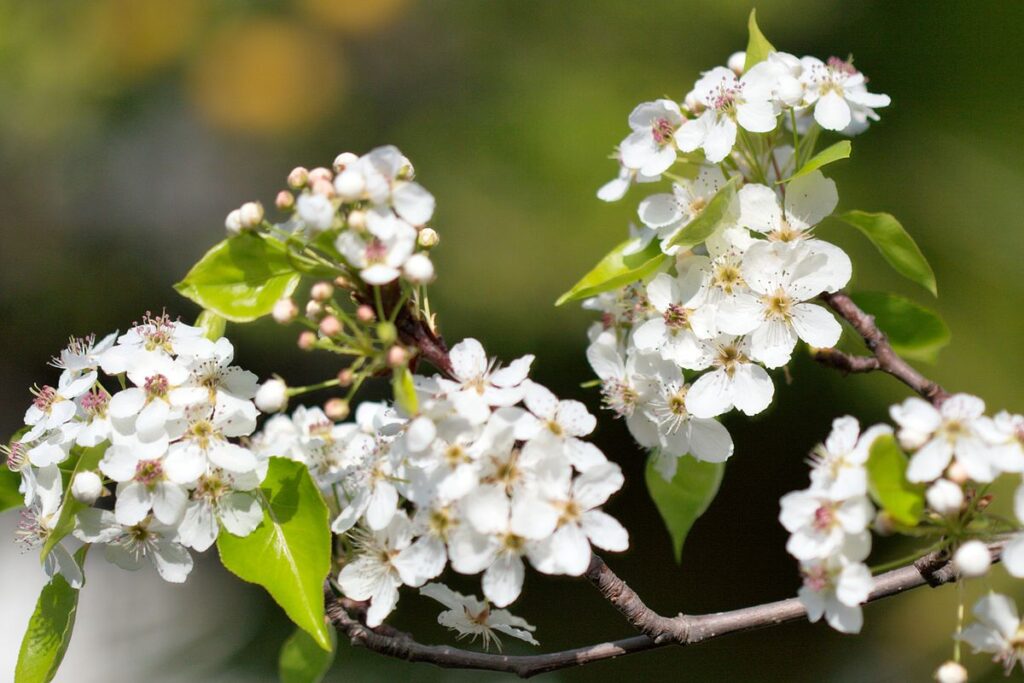 At first glance, the Callery pear (Pyrus calleryana) tree seems appealing, with its white blossoms in spring and colorful leaves in fall. Digging a little deeper, however, reveals the grim reality of this common urban tree. Once introduced for its ornamental value, this invasive species has become a significant threat to Wisconsin’s ecosystems.
At first glance, the Callery pear (Pyrus calleryana) tree seems appealing, with its white blossoms in spring and colorful leaves in fall. Digging a little deeper, however, reveals the grim reality of this common urban tree. Once introduced for its ornamental value, this invasive species has become a significant threat to Wisconsin’s ecosystems.
Originally native to China and Vietnam, the Callery pear was first introduced to the U.S. in Maryland in the early 20th century as an ornamental tree. These trees became popular with landscapers because they were inexpensive, transported well and proliferated. However, its ability to thrive in various soil types and climates led to its widespread cultivation nationwide, including in Wisconsin.
The Callery pear’s invasive nature poses a significant threat to Wisconsin’s native flora and fauna. One of the primary issues is its prolific ability to spread. The tree produces copious amounts of tiny, easily dispersed seeds, allowing it to colonize disturbed areas rapidly. Once established, it forms dense thickets, outcompeting native vegetation for resources such as sunlight, water and nutrients.
Furthermore, the Callery pear needs natural predators or pests in Wisconsin. Its unchecked aggressive growth can alter ecosystems, reducing biodiversity and disrupting crucial ecological processes. Additionally, the compact brush formed by Callery pear trees can create barriers to habitat and nesting sites, negatively impacting native wildlife species.
The damaging impact of the Callery pear invasion extends into the urban environment. The tree’s shallow root system makes it prone to storm damage, leading to soil erosion and increased flood risk. The dense growth of Callery pear trees in urban areas can also damage infrastructure, such as sidewalks, roads and utilities, resulting in hazardous conditions and costly repairs.
Although there is a long way to go to eliminate the Callery pear in Wisconsin, concerted efforts from government agencies, conservation organizations and the public are crucial in combating this threat. By working together to expose the harmful nature of these trees and implementing effective management strategies, we can make significant progress toward preventing the spread of this invasive tree.
Strategies to control the spread of the Callery pear tree include:
- Mechanical Removal: Cutting down mature trees and manually uprooting saplings to prevent seed production and limit regrowth.
- Herbicide Treatment: Application of selective herbicides to targeted trees to inhibit growth and prevent resprouting.
- Public Awareness and Education: Educating communities about the negative impacts of Callery pear and promoting the use of native plant alternatives in landscaping.
- Early Detection and Rapid Response: Monitoring and promptly addressing new infestations to prevent further spread.
See below for a non-exhaustive list of alternative species to Callery pear along with their mature heights. Before selecting a species, factor in form/crown spread and site suitability; note that each species will have varying tolerances to different urban stressors.
- Crabapple – Malus (~10-30’)
- Serviceberry – Amelanchier (~15-30’)
- Korean maple – Acer pseudosieboldianum (~20’)
- Peking lilac – Syringa pekinensis (~20’)
- Japanese Tree lilac – Syringa reticulata – (~25’)
- Thornless Cockspur hawthorn – Crataegus crus-galli var. inermis (~25’)
- Winter King Hawthorn – Crataegus viridis ‘Winter King’ (~25’)
- Musclewood – Carpinus caroliniana (~25’)
- Amur maackia – Maackia amurensis (~25’)
- Golden Glory dogwood – Cornus mas ‘Golden Glory’ (~25’)
- Paper bark maple – Acer griseum (~25’)
- Ironwood – Ostrya virginiana (~25’)
- Eastern Redbud – Cercis canadensis (~25’)
- Three flower maple – Acer triflorum (~30’)
- Crimson Sunset® Maple – Acer truncatum x platanoides ‘JFS-KW202’ PP21,838 (~35’)
- Norwegian Sunset® Maple – Acer truncatum x platanoides ‘Keithsform’ (~35’)
- Red horse-chestnut – Aesculus carnea (35’)
